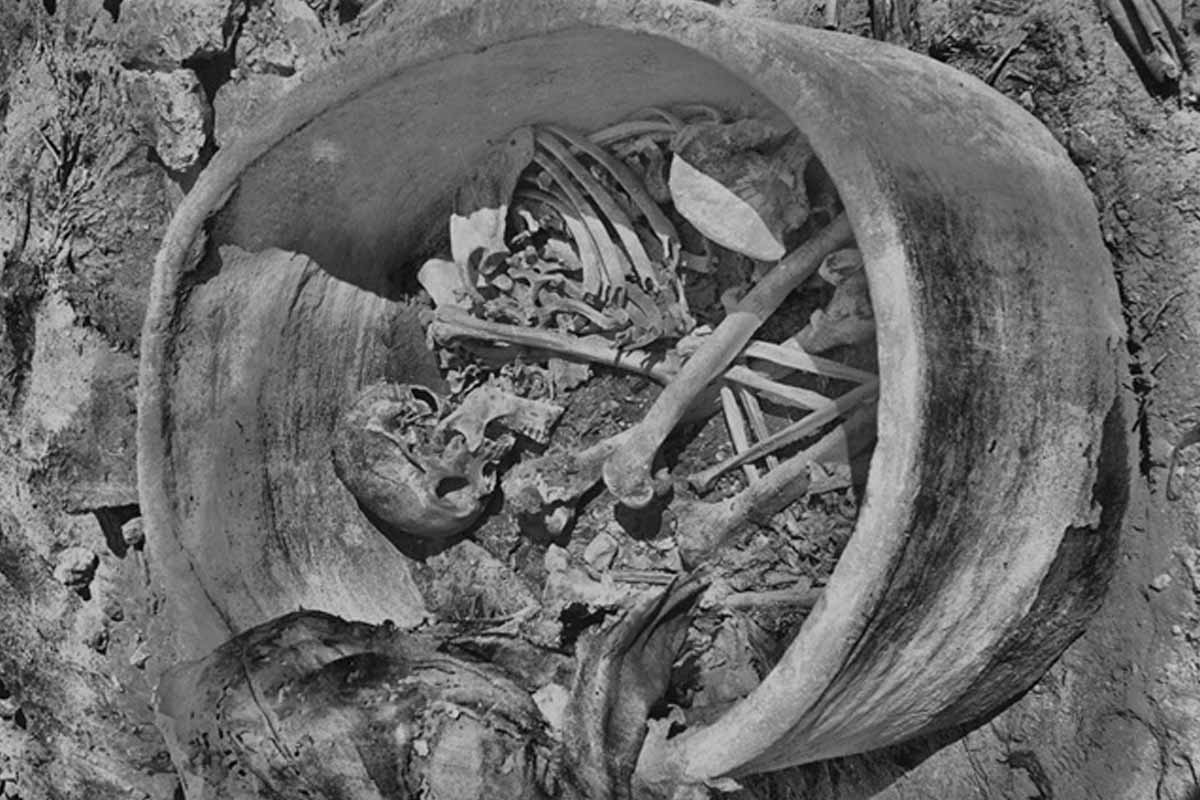Buried in silence for millennia, a single discovery has reopened questions about origins, connections, and forgotten ties between distant lands. Within a sealed vessel, researchers uncovered traces that promise to reshape what we know about early human movement. The story hidden inside that ancient container reaches far beyond one life, it whispers of two worlds meeting in ways once only imagined, with DNA now serving as the bridge between them.
From pot burial to preserved DNA
His bones lay inside a large ceramic pot placed within a rock-cut tomb. That container, along with the chamber’s steady cool air, protected fragile molecules while centuries passed. The simple setup matters because embalming chemicals in later periods can harm genetic material, whereas sealed vessels often slow decay in hot regions where heat accelerates damage.
The man’s life overlapped the Old Kingdom. Researchers combined skeletal observations with genomic and chemical analyses to build a coherent profile. Because every method adds a different layer—structure, ancestry, diet—the results reinforce one another. Radiocarbon dates anchor the chronology, while osteology and chemistry ground the lived details. Together, they transform an isolated skeleton into a well-evidenced biography.
Earlier work in Egypt faced repeated failures because time and temperature brutalize ancient molecules. In 1985, Svante Pääbo showed cloned fragments from a mummy, yet full ancient human genomes long remained out of reach. This burial breaks that pattern. It shows that context, not only technique, can decide whether old sequences survive. Pots, tomb microclimates, and teeth become practical tools.
Timeline, place, and the first complete Egyptian genome
The remains came from Nuwayrat near Beni Hasan, about 170 miles, or 275 kilometers, south of Cairo. Radiocarbon dating places the life between 2855 and 2570 BCE, squarely within the rise of monumental building and administrative complexity. Researchers extracted DNA from two teeth in dedicated clean rooms, then sequenced the genome to roughly twofold coverage.
Adeline Morez Jacobs of Liverpool John Moores University and the Francis Crick Institute led the genetic analyses. The work reports low contamination estimates and the damage patterns expected in very old molecules, which supports authenticity. Those checks matter because modern handling can smuggle in stray sequences. Strict procedures, therefore, turn a delicate target into reliable data.
Isotope measurements from teeth align with a Nile Valley upbringing. That independent signal supports a local childhood, which fits the burial setting and the genetic profile. The combined evidence narrows speculation. It suggests a person born and raised near the river, active during a foundational era, and buried with care that preserved scientific value across millennia.
Ancestry signals linking North Africa and the Fertile Crescent
The genome shows about 80 percent ancestry from ancient North African sources. Roughly 20 percent aligns with Mesopotamia, in the eastern Fertile Crescent. Because the proportions are clear, they support movement of people as early states formed. The authenticated DNA turns a cultural suspicion into biological evidence.
Archaeologists long noted shared tools, motifs, and ideas across West Asia and Egypt at this time. The genome aligns with those observations, so it tightens the timeline for contact. Instead of only goods and symbols crossing borders, people did too. That pattern helps explain how technologies and practices spread during the earliest dynasties.
One genome cannot speak for a civilization, yet it anchors models for later work. It sets a baseline for comparison across regions and periods. As new sequences appear, researchers can test whether Mesopotamian-linked ancestry was common or rare. Either outcome matters because it clarifies how societies formed while the Nile state consolidated power.
How methods and microclimate secured DNA authenticity
Success hinged on careful sampling. Tooth roots are rich in cementum, a tissue that often preserves genetic material better than many bones. By targeting that layer and using modern single-stranded library protocols, the team pushed beyond long-standing barriers faced in hot climates, where degradation normally erodes signal before it can be measured.
Quality control included damage profiling and computational checks that flag contamination. Those steps ensure the sequences fit ancient patterns rather than modern fingerprints. Because the burial lacked mummification, embalming agents did not complicate recovery. The pot and cool chamber acted as a natural archive that kept molecules readable enough for confident analysis.
Context also matters against the broader record. Earlier studies at Abusir el-Meleq recovered only partial nuclear data and from much later individuals. This Old Kingdom genome fills an early gap, so it improves the timeline. It links demographic signals to a period when writing systems, monumental projects, and administration became more organized and visible.
Status, labor traces, and what one life can and cannot prove
Skeletal markers tell a story of work. Age at death was about sixty. Estimated height reached roughly 1.6 meters, or five feet three inches. Osteoarthritis and wear indicate hard, repetitive movements. Because the patterns suggest extended sitting with upper-arm strain, researchers point toward craft work, possibly with a pottery wheel, as Joel Irish has noted.
Burial setting implies relative status for the time—rock-cut tomb, large ceramic container, purposeful arrangement. That sits uneasily beside the stress etched into joints. The tension hints at skill-based prestige, where valued expertise coexisted with physical strain. Social texture, therefore, peeks through biology even if texts remain silent.
What one person shows must be tested across many. Future projects will expand regional and temporal coverage, so models of population change can sharpen. Lessons about preservation will guide that search, because teeth, sealed containers, and microclimates consistently outperform exposed sand. When teams plan museum sampling, practical factors like these can decide success with DNA recovery.
What this single genome changes about early Egyptian history
This study demonstrates that careful context and modern methods can recover robust sequences from a hot landscape. The admixture signal links North Africa and West Asia during a formative era, while other measurements argue for a Nile Valley childhood. Because techniques authenticated the material, the findings help anchor debates, and DNA becomes a reliable witness rather than a fragile rumor.
